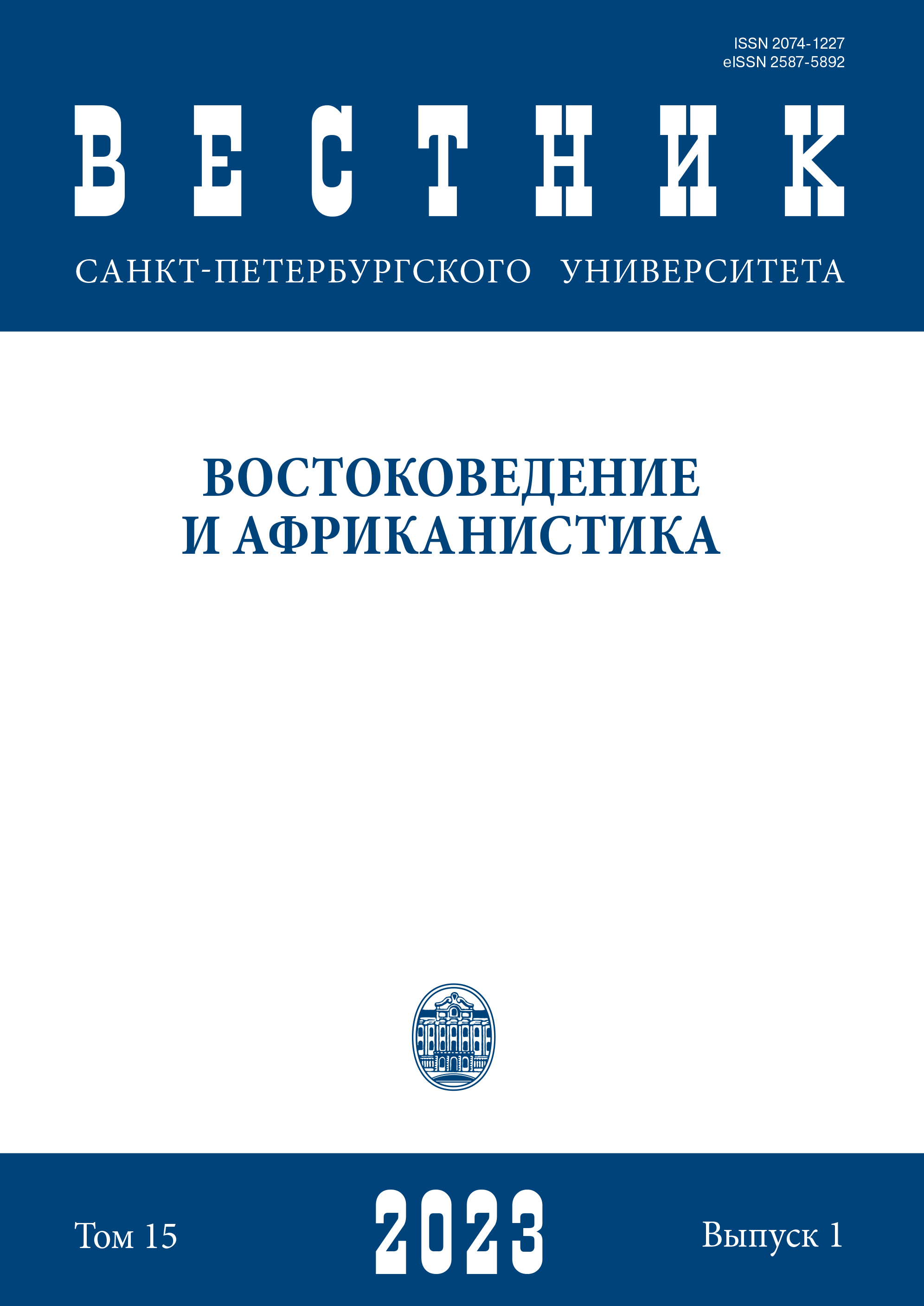Erzhenzhuan: A Reflection of Shamanistic Culture in the Folk Art of Northeast China
DOI:
https://doi.org/10.21638/spbu13.2023.112Abstract
The article deals with the actual problems of the inheritance of the ethnic traditions of shamanic culture in the modern song and storytelling dance art of the genre of comedy miniatures Erzhenzhuan of northeast China, which have preserved elements of the culture of shamanism in traditional art. In China, the term shaman first appeared in the historiography of the Southern Song Dynasty (南宋) over 800 years ago. Shamanism in a broad sense is a multicultural tradition, and at the same time integrates various ethnic cultures, including folk beliefs, traditional medicine, etc. Erzhenzhuan (二人转) is a folk song and storytelling dance art, when performers sing, tell and dance at the same time. In this case, the dance of the sorcerer in shamanism developed into a unique form of Erzhenzhuan folk art as a secularization of religious classics. Later, the sorcerer’s dance became the Balaman dance (巴拉莽式舞), the Balaman dance became the Yangge (秧歌), the Yangge became the Erzhenzhuan. The article traces the history of the development of the Erzhenzhuan style as a folk art with strong local characteristics. Erzhenzhuan was first recognized by the national literary and artistic circles of China in the fifties of the 20th century. The first Erzhenzhuan program was presented by the northeastern delegation of the People’s Republic of China. Very interesting are the original ways of performing songs, storytelling and dancing, such as Danchutou (单出头) and Lachansi (拉场戏). The transformation of the shamanic attire into the modern costume of Erzhenzhuan performers is interesting. The following describes the musical accompaniment of sacred prayers preserved from shamanic sacrificial songs. At present, Erzhenzhuan is not only flourishing in the northeast of China, but also popular with the entire Chinese people. Erzhenzhuan is now becoming more famous in the rest of China because many Erzhenzhuan performers appear on television and star in TV series. In the process of research, it is supposed to determine that in Erzhenzhuan there is an influence of the culture of shamanism on the costumes of performers, song, storytelling and dance art in a conceptually fused syncretic form.
Keywords:
Erzhenzhuan (rotation of two people), shaman culture, folk art, Balaman style, Yanghe style, shaman dance, song, storytelling, dance art
Downloads
References
Downloads
Published
How to Cite
Issue
Section
License
Articles of "Vestnik of Saint Petersburg University. Asian and African Studies" are open access distributed under the terms of the License Agreement with Saint Petersburg State University, which permits to the authors unrestricted distribution and self-archiving free of charge.





